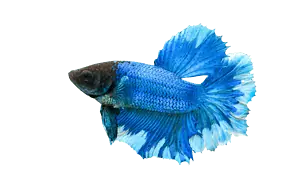Meet the Elephant Ear Betta, a magical member of the Betta family.
With vibrant colors and fins like elephant ears—giving it its fun name—it’s easily a star of the sea.
Here’s the catch—you’ve heard “one size doesn’t fit all,” right? It’s no different with Bettas.
While they share basic care needs, each type requires specific care adjustments.
Learning these subtleties can revolutionize your Betta-care approach.
Ready to step up your Betta-parenting skills? Let’s jump right in!
Table of Contents
Physical Characteristics of Elephant Ear Betta
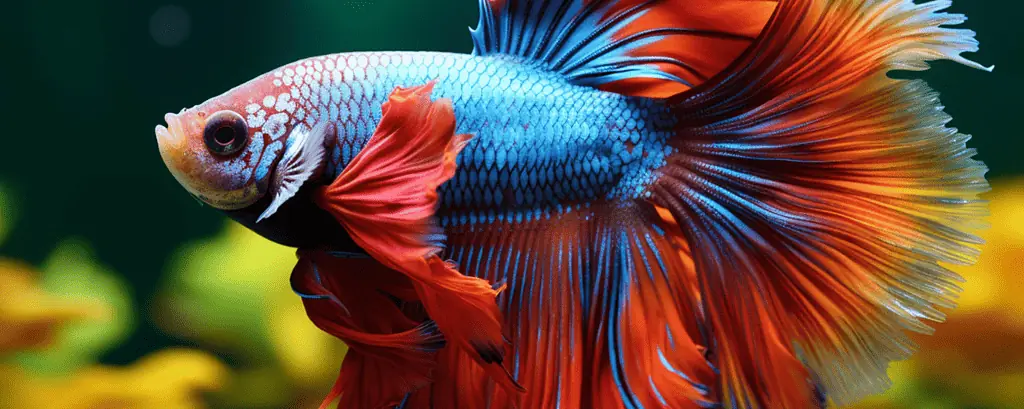
Appearance
Fin Shape and Size (Pectoral Fins)
Imagine a Betta fish dancing like a ballerina, its fins acting as a skirt.
That’s the Elephant Ear Betta for you. Known for their large, fan-like fins, they resemble an elephant’s ear, hence the name.
This unique fin form is a captivating genetic mystery. Unlike regular Bettas, an Elephant Ear’s fins dance with a grace that keeps us entranced – catch the pun!
Color Variants
The Elephant Ear Betta has a colorful array, thanks to nature and genetics.
Its shades range from popular blues and reds to uncommon greens and purples.
Beauty is subjective, and certain colors fetch more admiration in Betta circles.
Blues and reds are common, but seeing a Dalmatian variant can set off a buying craze, like a Betta fish Black Friday!
To see the many colors bettas offer, check out our post on betta fish colors here.
Male vs. Female Differences
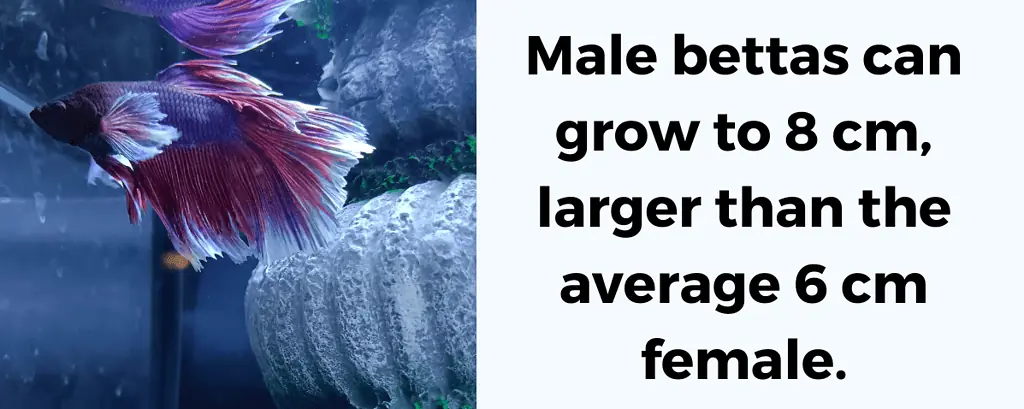
Size Differences
Aquarium fish come in all shapes and sizes, and male bettas that can grow up to 8 cm (3 inches) are no exception, overshadowing the typical female elephant ear betta averaging at 6 cm (2.5 inches).
Size doesn’t change tank or care needs, making them easy to take care of, nor does it make females less engaging!
Coloration and Fin Shape
Move over, Peacocks and Birds of Paradise!
The male Dumbo Betta fish, with their splashy colors and showy fins – products of sexual selection, are the stars of the aquarium show.
These dramatic displays attract mates and deter rivals, making a powerful statement in the swimming lanes!
Behavioral Differences
Our fish friends demonstrate a yin and yang dynamic.
The vibrant and grandiose males oscillate between territorial and macho vibes – think a miniature, wet Clint Eastwood!
The ladies, on the other hand, lean towards tranquility, simplifying tank setups and mate-finding.
Size and Lifespan
Average Size
On size, a Dumbo Betta matches an average Betta, typically around 2.75 inches.
Their large pectoral fins definitely add some buoyancy bonus!
Typical Lifespan
Caring for fish can be a bubbly affair. If you offer your Elephant Ear Betta a nice home and healthy food, it can live up to five years.
But watch out; poor water quality and stress can hurt its health, cutting its lifespan short.
Natural Habitat and Origins

Geographic Range
Elephant Ear Bettas, also called Dumbo Bettas, come from Southeast Asia, mainly Thailand, Cambodia, and Vietnam.
Famous for their big, wavy fins, these colorful fish love living in shallow streams, rice fields, and marshes.
In these areas, Bettas prefer still, calm waters. They use their unique “elephant ear” fins to navigate.
Water Conditions in the Wild
The fascinating world of Elephant Ear Bettas thrives on mild neutrality, favoring pH levels around 6.0 to 7.0.
These sturdy little champs bask comfortably in 76°F to 82°F, a tropical dream!
Their habitats feature a gentle water flow, ideal for these less-than-athletic swimmers.
Like mirroring your globetrotting in room decor, these insights inform how to set up a cozy Betta tank. Simply mimic their natural environment.
Keep the temperature and pH consistent, the water flow calm, and your Dumbo Betta will snugly settle in.
Care Requirements for Elephant Ear Betta

General Tank Requirements for All Bettas
Jump right into betta fish care, starting with their home— the fish tank.
Contrary to common belief, these aquatic wonders need more than a studio-sized water space!
No matter their pattern or fin size, every betta needs at least a 5-gallon tank.
Think, “Why such a roomy place for my petite pet?” Ever imagined a life stuck in your bathroom? Same idea for these underwater dwellers.
Along with ample swimming space, bettas need proper filtration and aeration.
Filters are vital, removing waste, blocking harmful bacteria growth, and maintaining fresh water. Simply put, consider the tank filter as your betta’s live-in cleaner.
Aerators serve as water air coolers, supplying oxygen and extracting carbon dioxide.
My betta, Sushi, certainly appreciates these little bubbles.
Specific Tank Requirements for Elephant Ear Betta
Ideal Tank Size
Elephant Ear Bettas have specific needs, and despite their unique ‘elephant ear’ fins, they don’t need more space.
Their happiness hinges on the quality of care and habitat. A well-managed 5-gallon tank works perfectly like a cozy, well-equipped studio trumping a large, empty loft.
Recommended Decor and Substrate
When it comes to decor, go light yet stylish! Elephant Ear fish love a tasteful home but avoid excessive decor and substrate.
Skip the sharp objects – smooth surfaces are key to prevent fin damage.
Opt for sand as substrate and ceramic decorations.
Diet and Nutrition

Types of Food
Alright, mealtime! Elephant Ear Bettas aren’t selective diners.
They’ll sift through pellets, flakes, or live food you toss in the tank. But remember, variety adds excitement.
Mixing dry and live foods maintains your betta’s gut health and color vibrancy. My pet betta, “Sushi,” favors daphnia, live brine shrimp, and bloodworms.
Feeding Schedule
How often should you feed them? Twice daily, small meals work best for these fish.
Don’t overfeed, despite their almost always-ready appetite.
Controlling the food helps maintain their health.
Keep in mind dietary requirements differ for juveniles and adults.
Health Considerations
Common Diseases
Real talk time: Elephant Ear Bettas may catch diseases like fin rot or ich (also called ‘ick’), identified by frayed, discolored fins and white spots.
But fret not! Keep their health in check – change the water often, avoid overfeeding, and only add compatible tank buddies.
Treat with aquarium salt baths and store-bought meds if needed.
Preventive Care
Good care is crucial for a thriving, tropical fish like betta splendens.
Keeping your freshwater fish healthy involves consistent monitoring of conditions such as ammonia, nitrite, nitrate, pH, and temperature.
A 25% weekly water change can do wonders to keep the tank fresh and lively.
If you’re unsure, don’t hesitate to consult our other guides or ask a professional.
Unusual? Maybe. But for the health and happiness of your vibrant, scaly friend, it’s absolutely worth it.
Behavior and Temperament
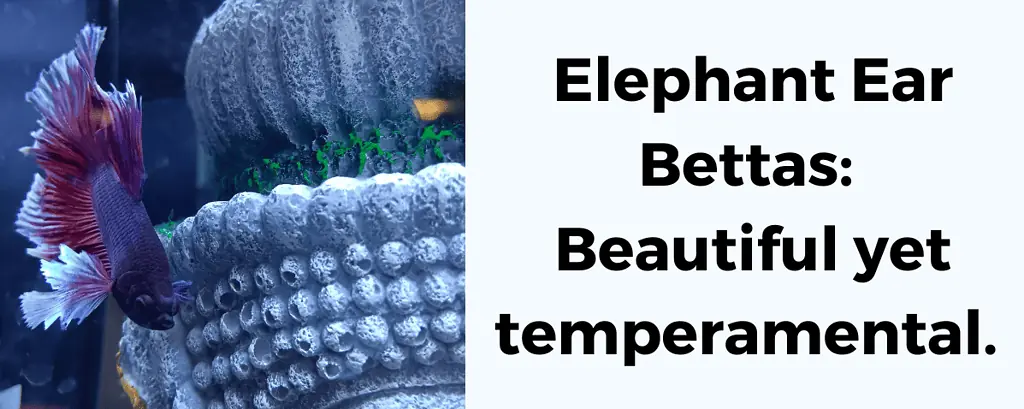
General Behavioral Traits
Picture elephant ear bettas as the intense but fascinating actors of freshwater aquariums.
Their flared fins exude beauty, but don’t be fooled; they’re temperamental.
Like a nosy friend eyeing your bookshelves and mugs, these fish show a keen interest in their surroundings.
Yet, they’re introverted, like a grumpy yet cute hermit preferring solitude over company.
Social Dynamics with Tank Mates
Elephant Ear Bettas often struggle with social interactions underwater.
Mixing them with other breeds or bettas can be challenging. They’re rather like 80’s movie jocks, keen to show power.
Signs like regular fin flares, puffed bodies, and quick moves show stress.
Compatibility might be the issue if your betta seems more interested in fights than friendly flips. Stay observant to catch these cues.
If your betta starts auditioning for “Fishy Mad Max,” it’s likely unhappy.
Understanding the temperament of Elephant Ear Bettas lets you create an environment they’ll thrive in.
It’s essential to respect your betta’s nature, not push a social agenda.
After all, fish will be fish! Ready for more delightful trivia? Dive in!
Compatibility and Tank Mates

Pairing your Elephant Ear Betta (named for its giant fin-like ears) with suitable buddies is a balancing act. It’s just fish tank diplomacy!
Good Tank Mates
Ah, roommates, sometimes a tale of fun, sometimes a challenge to tackle.
So, which underwater mates make for compatible compadres for your male betta, namely, an Elephant Ear Betta?
Let’s dive in:
- Corydoras Catfish: They’re the peacemakers of the sea, always grounded, and thus leave your one male betta ample space to flaunt his fins skyward.
- Ghost shrimps and Snails: Could they be better suited for your betta? They stick to their positions and steer clear of any home territory hullabaloo.
- Neon and Ember Tetras: While on the shy side, they surely hold their own. And their vibrant hues add a dash of panache to your larger tank.
Remember, much like us, each Elephant Ear Betta has his idiosyncrasies.
Learn to understand yours before inviting new swimming sidekicks.
Species to Avoid
Your ex-roommate who loved blasting music and stealing cake?
Some aquarium dwellers are equally unsuitable for your Elephant Ear Bettas.
Know the culprits:
- Other Bettas: Keep a one-betta-per-tank rule. Bettas are naturally territorial, and two could result in a fishy WWE-like showdown. Nobody wants that.
- Guppies and Other Bright Fishes: These flashy swimmers often draw undue attention. Your Betta may mistake their vibrant hues and frilly fins for a threat and strike.
- Large or Aggressive Fishes: They’re the aquarium bullies, especially fin nippers. Your Betta’s flowing fins make it an easy target.
Mind you, your Betta isn’t antisocial!
Friendships can bloom under the water with the right tank mates and careful observation.
After all, any fish, like us, enjoys swimming with pals.
Breeding
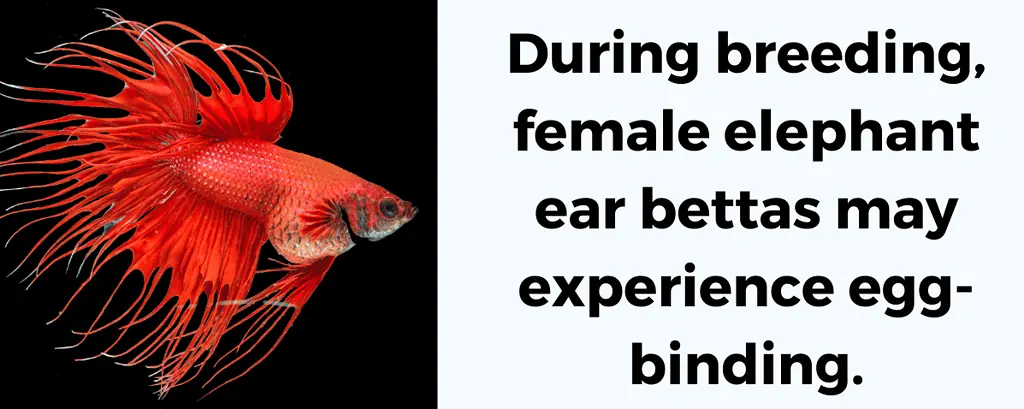
Required Conditions
Creating the optimal home for your male Elephant Ear Betta and female betta lovebirds requires as much thoughtfulness as setting up the perfect date night.
Kick-off with a larger, well-illuminated breeding tank of about 20 liters – their own intimate paradise.
Maintaining excellent water conditions is crucial as these beautiful fish are a bit particular about their surroundings; keep them comfortable at a steady 80°F.
It’s like crafting their own tropical hideaway within your community tank. A heater is the trick to keep those tropical vibes going around the clock.
Finally, ponder the aesthetics. Betta species crave some privacy during their special moments.
Accord them this solitude with plants or a breeding box.
It is the element that triggers those romance sparks!
Common Challenges
Breeding Elephant Ear Bettas isn’t always smooth sailing.
You may encounter issues, like ‘egg-binding’ in females, marked by enlarged bellies or reduced appetite. They could be struggling.
A relaxing salt bath often helps. A good bath works wonders!
Despite setting the mood, the bettas might not click.
Fishy feuds are common, so don’t fret. If aggression emerges, separate them and re-introduce them later. Picture it as a botched first date.
But remember, there’s still plenty of fish in the sea.
In truth, enduring these hurdles enhances the thrill of breeding success.
Stay hopeful, maintain optimal conditions, and trust in betta love!
Cost and Availability

Pricing Factors
Are you considering bringing the regal Elephant Betta fish, also known as the Siamese fighting fish, into your home and are curious about the potential costs?
Here’s everything you need to know.
Like mesmerizing art pieces, the value of these unique species correlates with several deciding factors.
At the top of this list is the captivating color play.
These Siamese fighting fish exhibit a variety of Betta colors, some of which are quite rare.
The rarer the color palette, the steeper the price. Just think of it as landing on a coveted Picasso at an unlikely flea market.
Not to be overlooked, the condition and quality of this fish’s trademark large, flowing elephant ear-like fins also influence the cost.
If you want to see healthy, well-crafted “elephant betta” fins swirling in your tank, be prepared to shell out a bit more.
It’s like investing in a finely tailored suit.
The breeder’s reputation carries notable weight.
Just as buying from a high-end brand ensures quality, choosing a respected breeder will come with a higher price tag.
But trust us, it’s worth it for these exquisite pets.
Availability and Where to Buy
Remember to be selective about the source when buying a vibrant Elephant Ear Betta.
These beauties, though readily found, aren’t uniformly excellent.
Don’t randomly shop at a pet store or online.
Just as buying a car involves consideration, so does choosing your Betta.
Go for a dependable breeder who specializes in these fish.
They’re fish-style gurus ensuring top-notch quality, health, and color.
They’re also a gold mine of advice unavailable at large pet outlets.
Don’t hunt for bargains; focus on reliability.
When it comes to your aquatic ally, quality should outvalue a cheap price tag.
Frequently Asked Questions On Elephant Ear Bettas
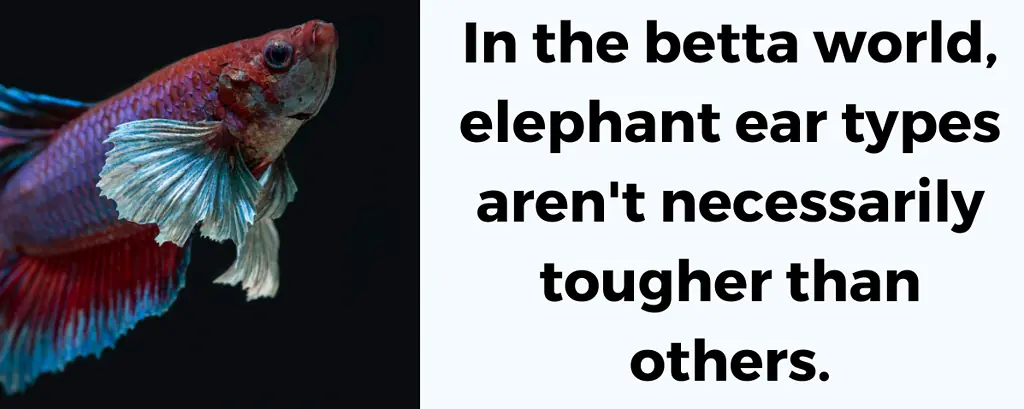
Are elephant ear bettas rare?
The elephant ear betta fish is no unicorn rarity, but it’s certainly no ordinary goldfish.
These vibrant fish, made available by dedicated breeders, are great for aquarists seeking to add zest to their tanks.
Are elephant ear betta fish more aggressive than other betta types?
In the betta world, elephant ear types aren’t necessarily tougher than their companions.
Bettas, much like fingerprints, sport unique personalities.
They commonly share a territorial trait, but it’s less aggression and more “room for one” mindset.
Are elephant ear bettas more difficult to care for?
Imagine lounging in a hammock with lemonade close by; your fish tank needs water change once a week– pretty dreamy, right? Surprise!
Elephant ear bettas are low-maintenance stars of the aquatic world.
Their needs? Basically the same as standard betta fish.
Low fuss, max sparkle – sounds like you’ve hit the pet jackpot!

